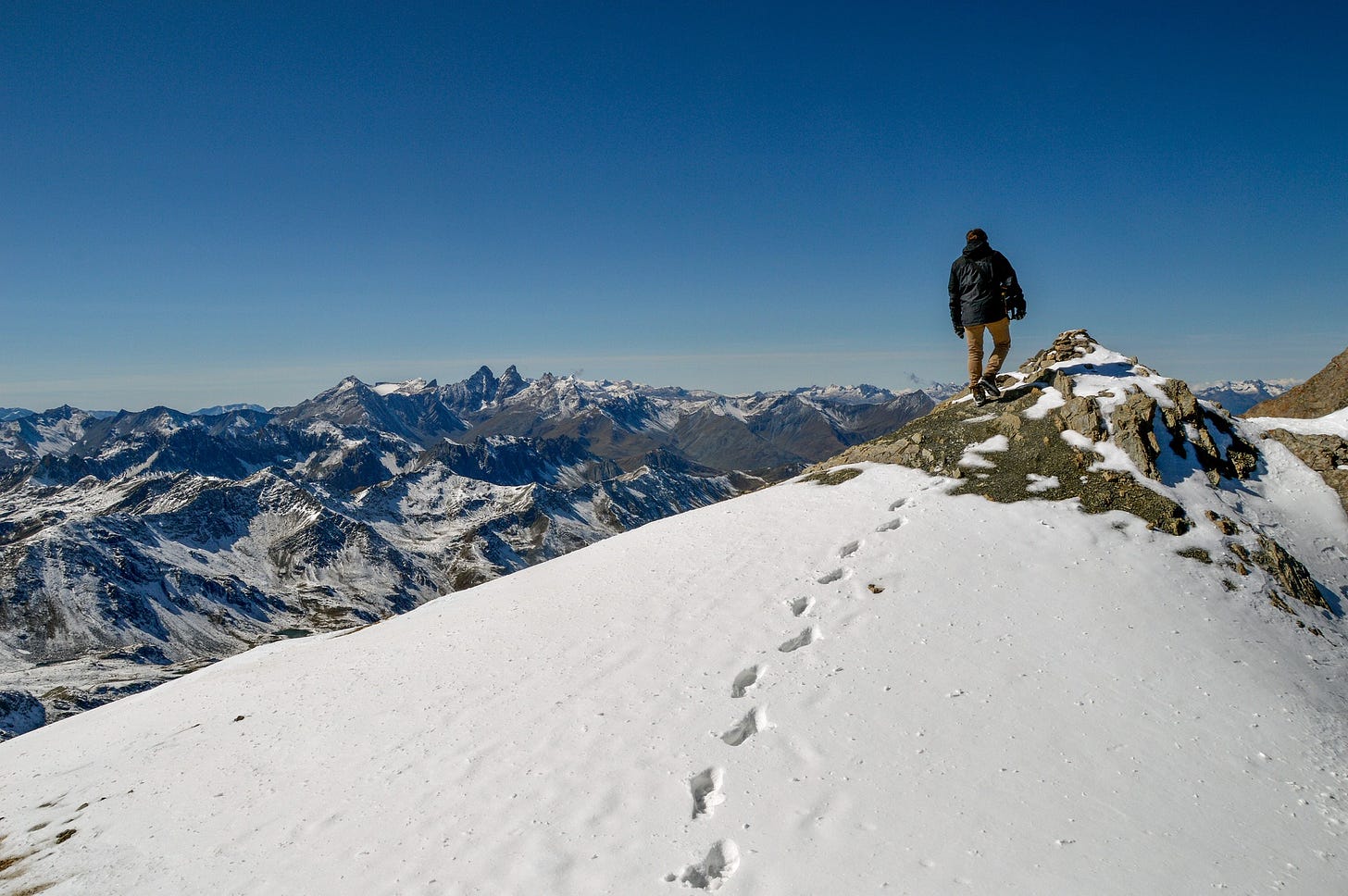Why New Year's Resolutions Often Fail – and How We Can Truly Shape the New Year
How pilgrimage can help us deal with goals and ambitions.
Dear Pilgrims,
Between Christmas and New Year, many of us take time to reflect on the past year and make plans for the new one. The New Year sparks the desire for a fresh start, often accompanied by ambitious goals. But this is precisely where the problem lies:
Unrealistic or vague goals: When resolutions are too large or unclear, we risk failing and losing motivation.
External pressure: Questions like "What are your New Year’s resolutions?" can already put us under pressure. Without genuine inner conviction, resolutions often lack commitment.
Stress and overwhelm: After the often-hectic Christmas season, additional resolutions can feel like a burden rather than a source of motivation.
Impatience with setbacks: Change takes time. Missing a single day is often viewed as failure, which can quickly lead to abandoning the goal altogether.
How to achieve your resolutions
The reasons for failure also point us towards success:
Realistic and precise goals: Use the SMART method (Specific, Measurable, Achievable, Relevant and Time-bound) to define achievable resolutions.
Small steps and milestones: Start with manageable changes. Celebrate progress to stay motivated.
Seek support: Share your goals with friends or a group that can motivate you and hold you accountable.
Maintain composure: View setbacks as part of the learning process rather than failure. Adjust your goals if necessary.
How pilgrimage helps achieve resolutions
While walking the pilgrimage paths, we meet people who set and achieve meaningful goals. But why is this the case? Pilgrimage forces us to pause, focus on what truly matters, and let go of distractions. It creates a space for reflection, transformation, and a deeper connection with yourself – all of which are crucial for pursuing resolutions with lasting success.
The act of walking – whether in solitude or conversation – gives us the time and clarity to understand what we genuinely want and, more importantly, who we aspire to become. This clarity about our identity is far more inspiring than simply chasing a specific task or habit. Resolutions born from this inner conviction are much more likely to endure.
Pilgrimage also teaches mindfulness and patience. It allows us to live in the moment and frees us from external pressures. Moreover, pilgrims learn to set realistic goals. On a single day, we may not complete the entire path, but every step brings us closer to our destination. This principle is equally valuable for resolutions: small, steady progress leads to long-term success.
Pilgrimage often carries a spiritual dimension that inspires and motivates us on a deeper level. By tying a pilgrimage to a personal intention or goal, we gain a profound sense of purpose and connection.
In my last newsletter, I explained how pilgrimage and Bible reading can help build sustainable new habits. This approach can also support you when setting new goals that require the development of new habits.
Walking in a group, we experience the power of community. Shared goals and mutual encouragement help us stay committed – whether on the trail or in everyday life.
Starting your year with intention
For the new year, I wish you the clarity to set conscious goals, the patience to pursue them without undue pressure, and the courage to take detours when needed.
If you’d like to experience the transformative power of pilgrimage, join our next group hike on January 18 from Erkner to Köpenick. Let’s take those first steps together and discover how far small, steady progress can take us.
Buen Camino,
Alexander





